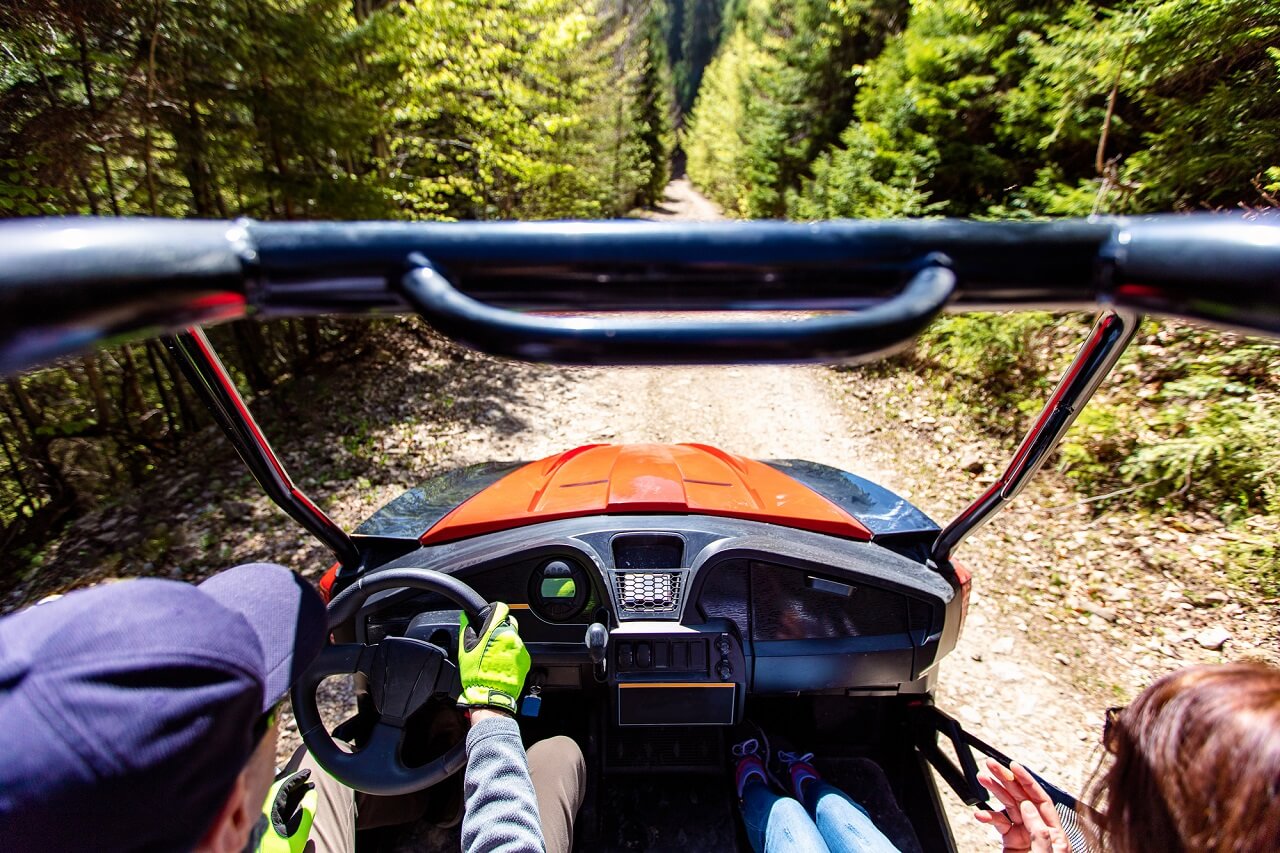While UTVs have several safety features such as a roll cage and seat belts, you still need to wear a helmet when riding a UTV.
An accident can still happen, causing serious injury to your head. Even if you don’t hit the ground or a tree, you could hit your head against a part of the vehicle.
Even in a farm, where you are driving slowly and in a familiar environment, you still need to wear a helmet while you are in the UTV.
What You'll Learn Today
Do I Have to Wear a Helmet in a Side-by-Side?

If we go by common sense, then yes, you have to wear a helmet while driving a UTV.
What about legally?
UTV and ATV laws vary from state to state, and some laws can even be unique to a particular county or local area.
Different states will specify different requirements for registration, minimum age, where ATVs and UTVs can be used, and whether you need to wear a helmet.
In several states including Massachusetts, New York, and California, it is legally required for ATV and UTV riders to wear a DOT-approved helmet.
In some states like Florida, the helmet requirement only applies to young riders under the age of 16.
Other states don’t say anything regarding wearing a helmet or any other safety equipment.
Polaris has compiled a handy list of links to ATV and UTV regulations in all 50 states. Use it to find the specific regulations for your state.
But keep in mind that there may be additional restrictions or requirements for a particular locality. For instance, some local parks departments may restrict use of UTVs in certain areas because of safety hazards or risk of ecological damage.
Something else to note is that most of these state regulations only apply when you drive your UTV on public lands. In most cases, if you are going to use the UTV within your private property only, it’s up to you whether to wear a helmet or not.
Why Wear a Helmet in a Side by Side?

Some people assume that because a UTV seems safer than an ATV and already comes with various safety features (like a roll cage), they don’t need to wear a helmet.
But there’s still a risk of impact to your head when you are driving a side by side.
UTVs don’t come with a windshield, windows or doors. So it’s easy for an overhanging tree branch to smack you in the head.
Even if you add a windshield, there’s still danger from the sides.
Another risk is impact against the UTV itself. If you are driving on rough and uneven terrain, your UTV will be bouncing around and tilting. You could easily hit your head against the roll cage or steering wheel.
If you are driving with friends, debris could come flying from the wheels of their vehicle directly towards your head.
Your own wheels could also fling rocks and debris at you.
Then there’s the biggest risk of all – the UTV tipping or rolling over.
It’s true that UTVs are more stable than an ATV. But you can still roll over when driving on uneven terrain or an extremely steep trail. Overloading or uneven load distribution can also cause the vehicle to tip over and your head can smack against the ground, a rock, a tree or the vehicle.
A helmet protects you in all these scenarios.
What Type of Helmet Should I Wear in a UTV?
Full face helmets are the best for UTV riders. These helmets protect the head, as well as the mouth and chin.
Most full face helmets incorporate a visor, providing further protection to your eyes from mud and debris.
Other types of helmets that are suitable for UTV riders include modular helmets, motocross helmets and offroad helmets. All these are different types of full face helmets.
Some UTV riders opt for the less bulky open face or three quarter helmet. An open face helmet provides head and side protection, but it’s open on the front. Your nose and chin are unprotected.
An open face helmet is cheaper, provides great visibility, and doesn’t affect communication with passengers in the vehicle.
But because of the risk of impact to your face, a full face helmet is the better choice.
Whichever helmet you choose, make sure it is DOT approved.
If you need more help choosing the right helmet for your UTV, watch the video below where experts discuss the pros and cons of different kinds of helmets.
Do Kids Have to Wear Helmets in a Side by Side?
Kids riding a UTV are in the same danger as adults. A helmet is a must-have.
Legally speaking, some states have mandatory helmet requirements for kids riding off road vehicles. Other states say everyone should wear a helmet, while a few states say nothing at all on the matter.
Note that your state may have a requirement on how old someone can be to drive a UTV. Some state laws say someone has to be at least 16 years old. Others allow kids under 16 to operate a UTV, but only with adult supervision.
Can I Buy a Used UTV Helmet?
A used or second hand helmet will save you money, but it’s not worth the risk. You can’t tell whether the helmet has been damaged in an impact.
Even if it looks good on the outside, it may have internal damage.
Always buy a new helmet that is DOT-approved.